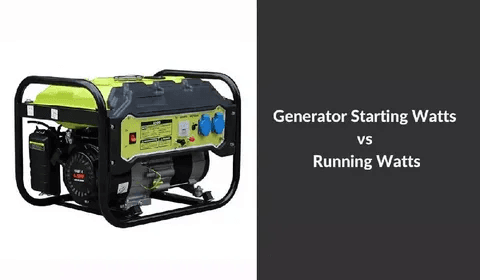Meta Description: Read about the key difference between starting watts and running watts of the appliances and generators. Find out how to compute your power requirements, to prevent overloading, and the selection of a suitable generator unit in your residence.
When you go out to purchase generators or do the required planning towards your home backup power system, it is important that you know the difference between the starting watts and those running watts. These two specifications ascertain that your generator is capable of serving your appliances effectively without inflicting expensive damages of equipment due to power overloads.
What Are Starting Watts and Running Watts?
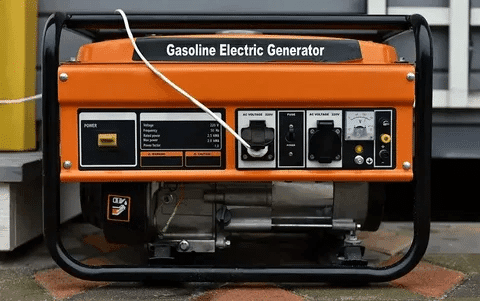
Running watts or rated watts or continuous watts are the constant electrical power an appliance uses when it is in running condition. That is the steady amount of power you will be consuming after the device is installed and running smoothly.
Starting watts or peak watts or peak or surge watts is how the extra watts of electricity needed to start an appliance are perceived. This surge is only for a few seconds and can be much greater than running watts requirement.
The major distinction is with regard to time and intensity. Although running watts are stable and constant, the starting watts will supply a momentary boost of additional energy required to overcome startup inertia and start motors running or warm heat elements.
Why Starting Watts Matter More Than You Think
Most appliances, especially those that have motors or compressors need significantly more power to get running than to operate. A 700 running watts refrigerator may require 2,200 starting watts, which is more than triple the running requirement. This can be a tremendous surprise to the homeowner when determining generator sizes or back-up power units.
Failure to consider starting watts results in a number of issues:
- Overload and automatic reset of generator
- Failure to use important appliances when power is out of order
- The risk of damaging the generator and the equipments attached to it
- Futile trying to energise home lifesaving systems
How to Calculate Your Total Power Requirements
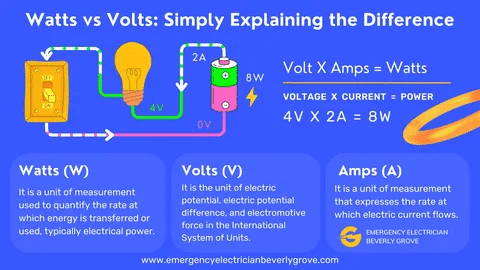
Calculation of starting and running watts of all devices that you intend to operate concurrently would be significant to determine your power needs.
Step 1: Take an inventory of your appliances Take an inventory of all the appliances you would like the power and record starting and running watt requirements. Find out the correct numbers on the manufacturer label, user manuals, or the specification online.
Step 2: Convert Other Units to Watts In case specification is provided in volts and amperage, you will have to multiply them by using the following formula: Watts = Volts x Amperage
Step 3: Add Up Running Watts Find the total running watts by counting the continuous power draw of all appliances that you will run all at a similar time.
Step 4: Include Starting Watts Find the brand that has the maximum starting watt. Include this peak demand to your overall running watts.
Step 5: Add Safety Margin Add a 10-20 percent margin to your figure as a safety margin and take power fluctuations into consideration.
Common Appliance Power Requirements

It is useful to learn more about average power demands, as this allows you to manage them:
High Starting Watt Appliances:
- Refrigerator: 700 continuous, 2200 starting watts
- Washing machine: 1200 running, 2300 starting watts
- Vacuum cleaner: 1,440 running, 2,500 starting watts
- Clothes dryer: 5,400 watt running, 7,000 watt starting
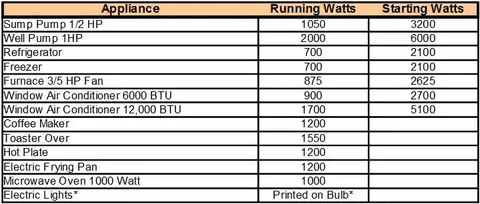
Low or No Starting Watt Appliances:
- LED light bulbs: 10- 20 running watts 0 starting watts
- Television: 0 100-400 running and 0 starting watts
- Microwave: 6001,000 continuous watts, 0 starting watts
- Laptop computer: 50300 running watts, 0 starting watts
Moderate Starting Watt Appliances:
- dishwasher 1300 running watts, 1,800 starting watts
- Box fan: 200 running amps, 350 starting amps
- Blender:800 starting watts, 300 running watts
Gas Generators vs Solar Generators for Starting Wattage
Conventional gas generators generally have a starting wattage which is only 10-20 percent higher than their running wattage rating. Nevertheless, the big gas generators are capable of supporting heavy starting loads in association to the well engineered design and fuel supply systems.
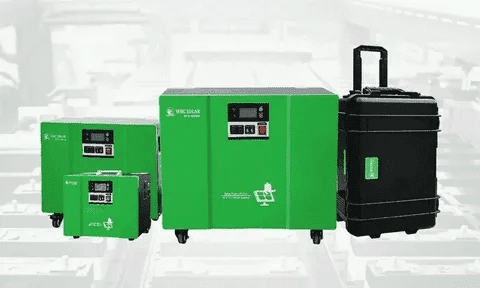
Contemporary solar generators and portable power units have changed the possibilities of the starting powerings. Some complex power management technology in advanced models can supply up to twice the recommended running wattage when starting; this is known as starting duty.
The following are the pros of solar generators:
- Noise-free (no engine noise) use Silent operation without engine noise
- No influence on the environment or zero emissions
- No maintenance and storage demand on fuel
- High-level surge protection and power management
- The capacity to be charged through solar power which is renewable energy.
Advanced Technologies for Enhanced Starting Power
New portable power stations use advanced technologies in order to achieve the maximum starting wattage. These have smart power solutions that raise the maximum production temporarily whilst averting the destructiveness of the generator as well as the appliances being supplied.
Some of its high end features are:
- Autostarting essence of automatic voltage regulation
- Intelligent load sensing and energy intelligent control
- Surge protection circuits that avoid damage
Choosing the Right Generator Size
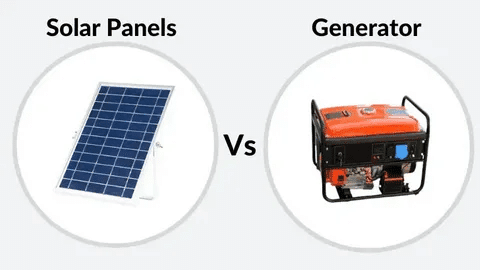
Battery cell matching to deliver consistent power Converting to automake (moved to automake/) The sample really holds 24 battery cells (24 times 100 inpower)
Essential Appliances Only: A 3,000-4,000 watt generator can support refrigerator and lights plus some basic electronics and has sufficient starting power capability.
Moderate Home Use: 5,000-7,000 watt A unit that runs most vital devices and also comfort items such as fans, microwaves and entertainment systems.
Generators Of Whole-Home Backup: Whole homes including air conditioning and electric heating, as well as numerous major appliances, can be fully powered by generators 10,000 watts and more.
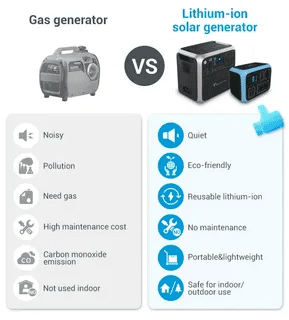
Safety Considerations and Best Practices
Safety and electrical good practice is important in proper generator use:
Electrical Safety:
- An amount of power higher than the starting watt rating of the generator should never be used
- Apply adequate extension cords that are capable of the power load
- Put in place transfer switches in permanent installations
- Make sure that all the electrical connections are properly grounded
Generator Maintenance:
- Frequent oil changes and filters replacement
- Banking of fuel and stabilizers in use
- Electric start battery care
- Load testing on a regular basis to test performance
Load Management:
- Turn appliances on one by one, instead of loading all appliances at once
- Keep track of cumulative loss in power used
- Where an option is available, use energy efficient appliances
- Look into non-essential devices load scheduling
Future Trends in Power Generation
The industry of power production is still developing towards a more efficient and environmentally-friendly alternative:
Battery Technology Advances: New battery chemistry means increased energy density and long battery life in smaller weights, which means more powerful portable generators in less weight.
Smart Grid: More current generators are becoming smart connected and their usage can be remotely monitored, automatic start and stop, and able to interact with home energy management systems.
Renewable Energy Integration: Solar generators and hybrid systems such as solar panels and battery storage with a low environmental footprint are a sustainable source of backup power.
Troubleshooting Common Starting Watt Issues
In cases where appliances fail to start even though the generators have sufficient capacity, some of the following factors may be behind such cases:
Voltage Drop: Drop in voltage that occurs by using long extension cords or undersized wiring voltage drop can result in improper starting. It should use the least length cord run with correct gauge of wires.
Multiple Appliance Startup: It is possible to have several appliances start up at the same time and this may overwhelm the generators. Plan the start up time stagger to eliminate clash with peak demand.
Temperature Effects: Some appliances have increasing starting watt requirements due to cold weather temperatures. Develop seasonal power planning.
Appliance Age: You may need more starting watts with older appliances, because something is worn out in it or efficiency is low. Think of improvement to new energy efficient models.
Conclusion
When it comes to backup power, everyone should first of all learn the distinction of starting watts and running watts. Starting watts denote highest power required to turn on appliances and running watts denote constant power requirements throughout the appliance operation. Starting watt demand may be two to three times more than running watts, especially in cases of motor-driven appliances such as refrigerators, washing machines, and air conditioners. This information has a direct bearing on a choice made when selecting the size of your generator and it can help you avoid an expensive disaster that would cause you to find yourself without power when you need it the most.

